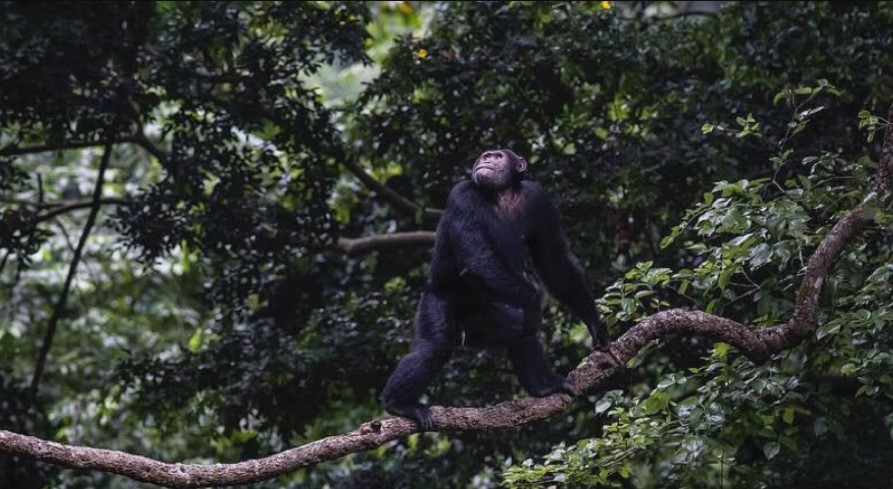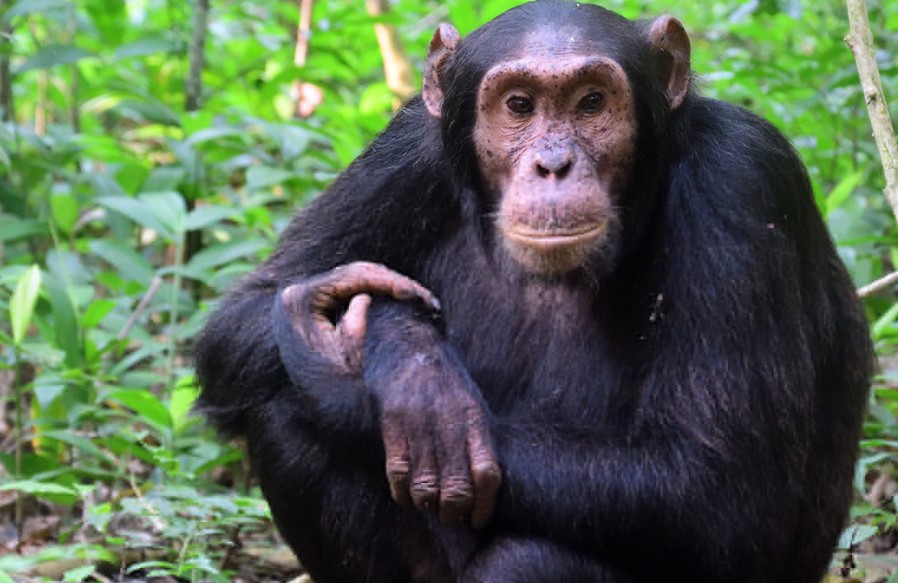The Kyambura gorge is about 100 meters deep and covered with beautiful vegetation. The gorge is found in Queen Elizabeth National Park and it is highly correlated with the primate community by major chimpanzees. The way the gorge was formed is amazing and interesting.
Indeed, here you will appreciate the Gods’ strength when it comes to creation. The river, called Kyambura, crosses the gorge, and the local people here believe that at one point the river carried all the occupants of the area and their belongings.
Those who remained in the far-flung areas, on the other hand, waited for the water to rediscover its source, and then followed the river in the hope of finding the moist person, which they couldn’t, prompting them to lament in their local language, “Kyambura,” which means “I have not found anything,” hence the river’s name, Kyambura.
Kyambura caters to a wide range of interests. The brave may trek into the dense undergrowth to meet the park’s lone chimp, while the interested can take a guided nature walk to observe a variety of intriguing birds and flora. Take a picnic near the gorge’s entrance or see the breathtaking beauty from the observation platform high above, for those wishing to relax and enjoy the vista.
In the Kyambura gorge, there are chimpanzees that the researchers for the Uganda wildlife authority habituated in order for the tourists to enjoy them. Since their habituation, most of the visitors visit Kyambura Gorge to track and see the chimpanzees. These chimpanzees can be found through the gorge walk with the guard of the Uganda wildlife authority.
Thick rainforest, marshy marshes, and vast crater lakes are surrounded by towering 100m high rock walls, giving the impression of being transported back in time. While the reserve comprises 156 square kilometers, the gorge itself is just eleven kilometers long and 100 meters deep. The Kazinga Channel is connected to the Kyambura River, which passes through the reserve. This distinctive environment provides ideal protection from the savannah’s predators above, which is why chimps have chosen to live here.

Wildlife in Kyambura Gorge
Kyambura Gorge has interesting wildlife species that visitors would like to see, which is very interesting for you to see. The wildlife includes both flora and fauna, including primates and other big mammals. Kyambura’s 13 diverse ecosystems contribute to its tremendous biodiversity.
From the sweltering savannah plains to marshes, swamps, and the cool rainforest undergrowth, there’s something for everyone. There are a number of uncommon plants to be seen here, many of which are unlikely to be seen elsewhere. The Kyambura River, which passes through the reserve, is a vital supply of water for Queens’ animals. You’re likely to encounter hippo, antelope, hyena, and the rare visiting elephant, in addition to chimps and other primates.
This means that the intriguing valley is home to a variety of animal species, including giant forest hogs, primates such as Chimpanzees, Vervet monkeys, Red-tailed monkeys, Black and White Colobus monkeys, and Olive Baboons. Aside from fauna, the Kyambura Gorge is home to a number of bird species, including African Finfoot and Blue-headed Bee-eaters, among others, which are so interesting and wonderful.
Certain activities are carried out in Kyambura Gorge, which include
Walking excursions are an excellent way to discover this hidden world and observe unusual plants, birds, and butterflies. You may also see colobus, red-tailed, and vervet monkeys, among the twelve other primate species that live in Kyambura. Kyambura is a birdwatcher’s paradise, so keep your binoculars pointed at the sky and you could glimpse the rare martial eagle, amongst many other bird species.
With the presence of different bird species such as falcons, Verreaux’s Eagle Owl, White-winged Warbler, Martial Eagle, Shoebill, Lesser Flamingos, Chapin’s Flycatcher, Bar-tailed Godwit, Papyrus Canary, Blue-headed bee-eaters, White-tailed Lark, African Broadbill, Greater Flamingos, Corncrake, among several other animals, this is so much fun.
Lastly, the primary attraction of Kyambura Gorge is chimp tracking. Excursions are held in the morning and afternoon, and sightings are around 80 percent of the time. Kibale National Park is the only area where you may see them.
The chimpanzee trekking journey begins with a 200-meter drop down the cliff, followed by a 2-3-hour hike through dense jungle. The chimps are accustomed to humans and will frequently engage and approach, providing an excellent chance for photography. Please come and enjoy chimpanzee trekking with us as you explore the world of enjoyment in the wild.


Comment (0)